Consider a disc rotating in the horizontal plane with a constant angular speed ω about its centre O . The disc has a shaded region on one side of the diameter and an unshaded region on the other side as shown in the figure. When the disc is in the orientation as shown, two pebbles P and Q are simultaneously projected at an angle towards R. The velocity of projection is in the y-z plane and is same for both pebbles with respect to the disc. Assume that (i) they land back on the disc before the disc has completed 18 rotation, (ii) their range is less than half the disc radius, and (iii) w remains constant throughout. Then
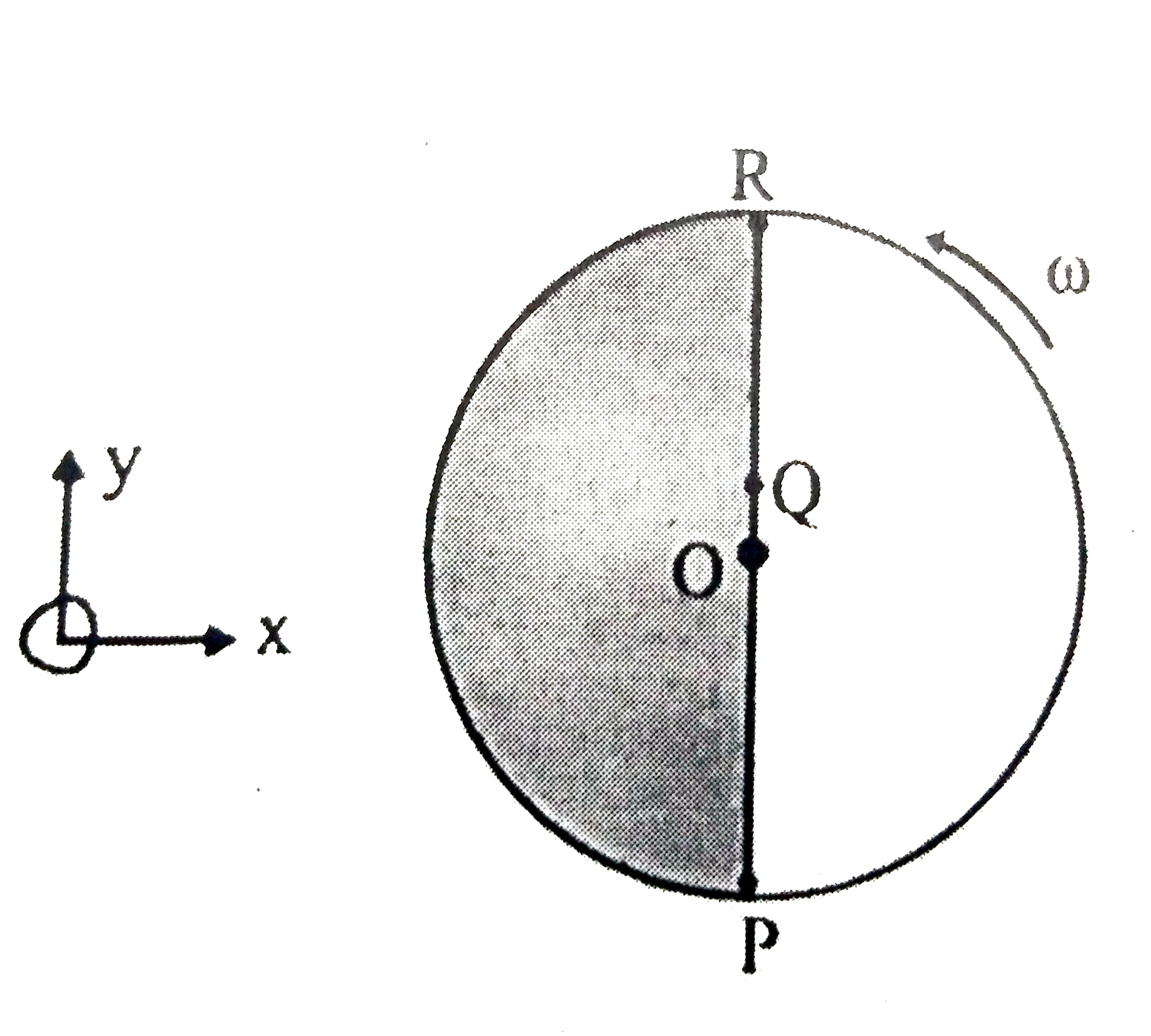
p lands in the shaded region and Q in the unshaded region.
P landa in the unshaded region and Q in the shaded region.
Both P and Q land in the unshaded region.
Both P and Q land in the shaded region.
The correct Answer is:C
The x−c∞rd∈ate distance of P= P = v_(x) xx t = omega R xx (pi)/(4omega) = (pi R)/(4)<br>Thishorizontaldistancetravel≤dwillbegreaterthananyp∮onthediscbetweenOandP.Therforetheland∈gwillbe∈unshadedarea.Inthesameway,thehorizontaldistancetravel≤dbyQisalways≤ssthantˆofanyp∮betweenOandR . Therfore the landing will be in unshaded area.
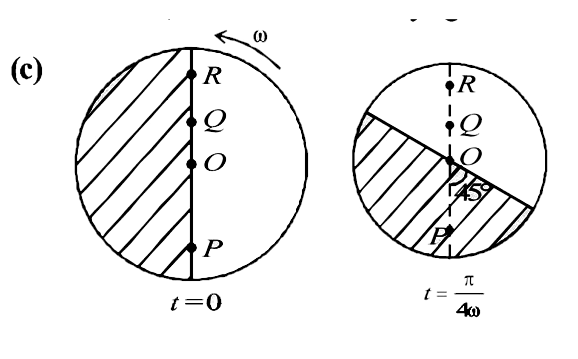
Topper's Solved these Questions
Similar Questions
A disc of mass M and radius R moves in the x-y plane as shown in the figure. The angular momentum of the disc at the instant shown is –
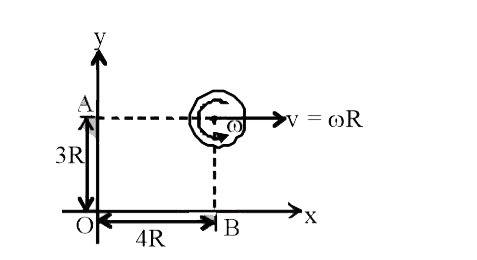
View SolutionA disc of radius R is moving on a rough horizontal surface with velocity v and angular speed ω at an instant as shown in figure. Choose the correct statement.
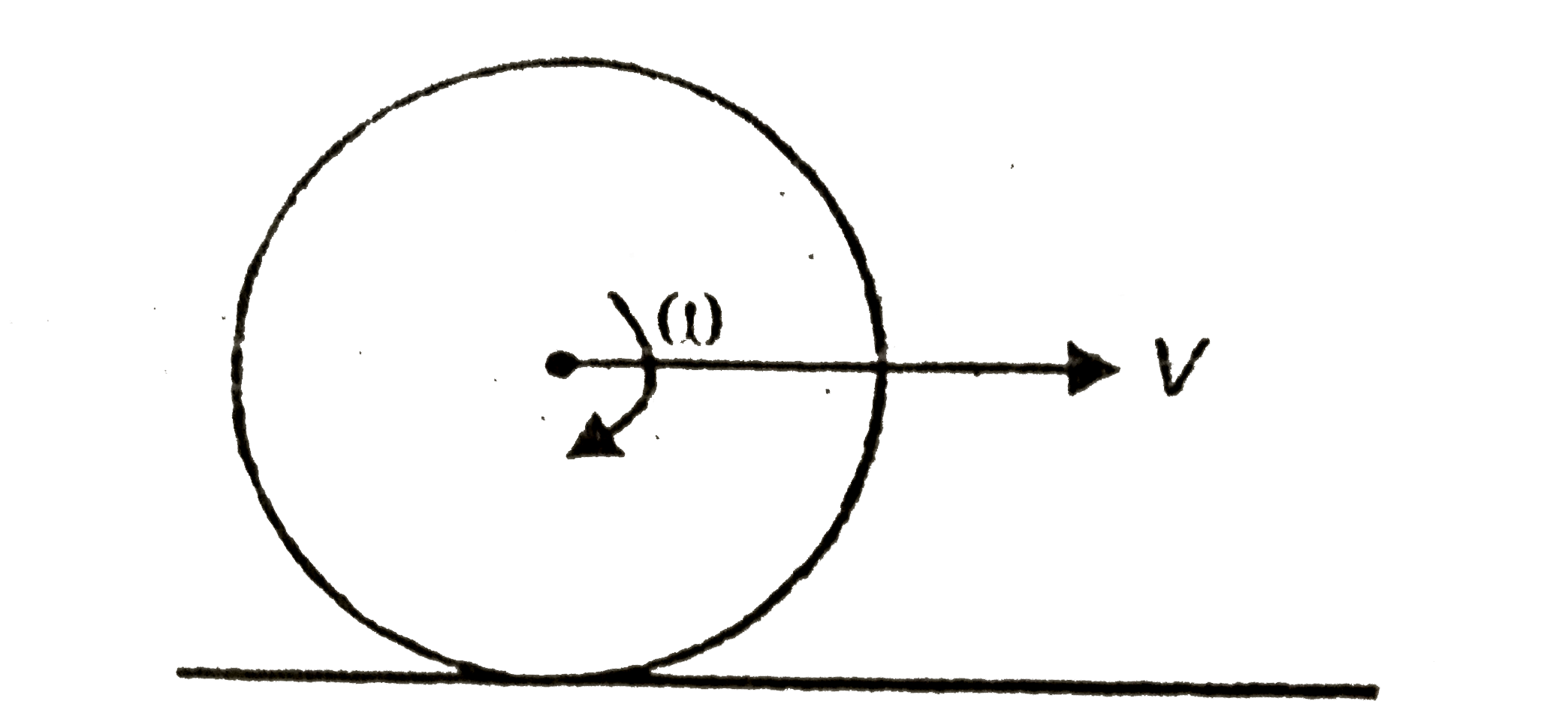
View Solution
Knowledge Check
Consider a disc rotating in the horizontal plane with a constant angular speed ω about its centre O . The disc has a shaded region on one side of the diameter and an unshaded region on the other side as shown in the figure. When the disc is in the orientation as shown, two pebbles P and Q are simultaneously projected at an angle towards R. The velocity of projection is in the y-z plane and is same for both pebbles with respect to the disc. Assume that (i) they land back on the disc before the disc has completed 18 rotation, (ii) their range is less than half the disc radius, and (iii) w remains constant throughout. Then
 Ap lands in the shaded region and Q in the unshaded region.BP landa in the unshaded region and Q in the shaded region.CBoth P and Q land in the unshaded region.DBoth P and Q land in the shaded region.
Ap lands in the shaded region and Q in the unshaded region.BP landa in the unshaded region and Q in the shaded region.CBoth P and Q land in the unshaded region.DBoth P and Q land in the shaded region.Consider a disc rotating in the horizontal plane with a constant angular speed ω about its centre O . The disc has a shaded region on one side of the diameter and an unshaded region on the other side as shown in the figure. When the disc is in the orientation as shown, two pebbles P and Q are simultaneously projected at an angle towards R. The velocity of projection is in the y-z plane and is same for both pebbles with respect to the disc. Assume that (i) they land back on the disc before the disc has completed 18 rotation, (ii) their range is less than half the disc radius, and (iii) w remains constant throughout. Then
 AP lands in the shaded region and Q in the unshaded region.BP lands in the unshaded region and Q in the shaded region.CBoth P and Q land in the unshaded region.DBoth P and Q land in the shaded region.
AP lands in the shaded region and Q in the unshaded region.BP lands in the unshaded region and Q in the shaded region.CBoth P and Q land in the unshaded region.DBoth P and Q land in the shaded region.Consider a disc rotating in the horizontal plane with a constant angu lar speed ω about its centre O. the disc has shaded region on one side of the diameter and an unshaded region on the other side as shown in Fig. 5.111. when the disc is in the orientation as shown, two pebbles P and Q are simu ltaneously projected at an angle towards R. the velocity of projection in the y-z plane and is same for both pebbles with respect to the disc. Assume that i they land back on the disc before the disc has completed 1/8 rotation, ii their range is less than half the disc radus, and iii ω reamisn constant throughout. then
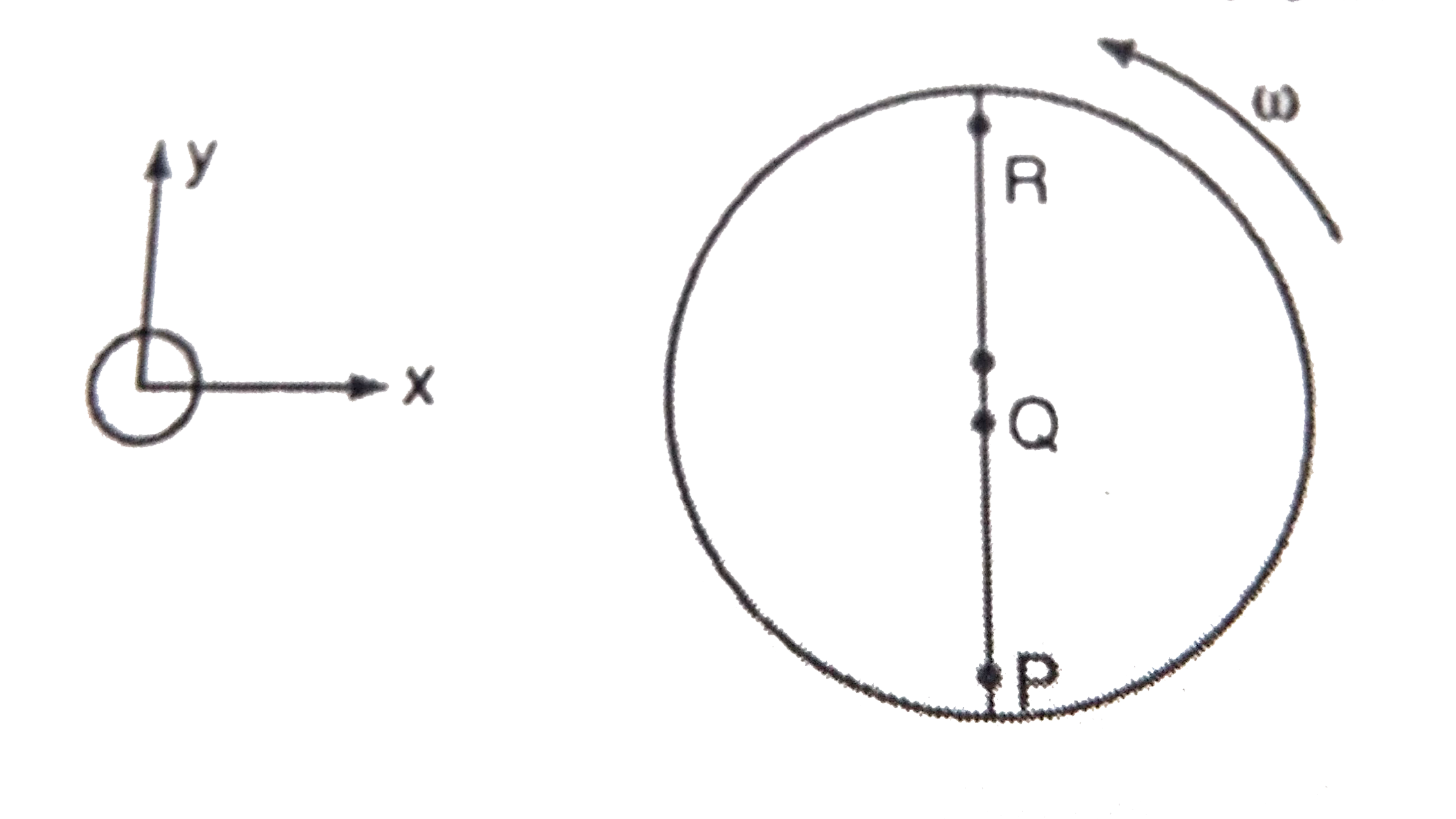 AP lands in the shaded region and Q in the unshaded region.BP lands in the unshaded region and Q in the shaded region.CBoth P and Q land in the unshaded regionDBoth P and Q land in the shaded region
AP lands in the shaded region and Q in the unshaded region.BP lands in the unshaded region and Q in the shaded region.CBoth P and Q land in the unshaded regionDBoth P and Q land in the shaded region
A disc rotating about its axis with angular speed ω0 is placed lightly (without any translational push) on a perfectly frictionless table. The radius of the disc is R. What are on the disc shown . Will the disc roll in the direction indicated?
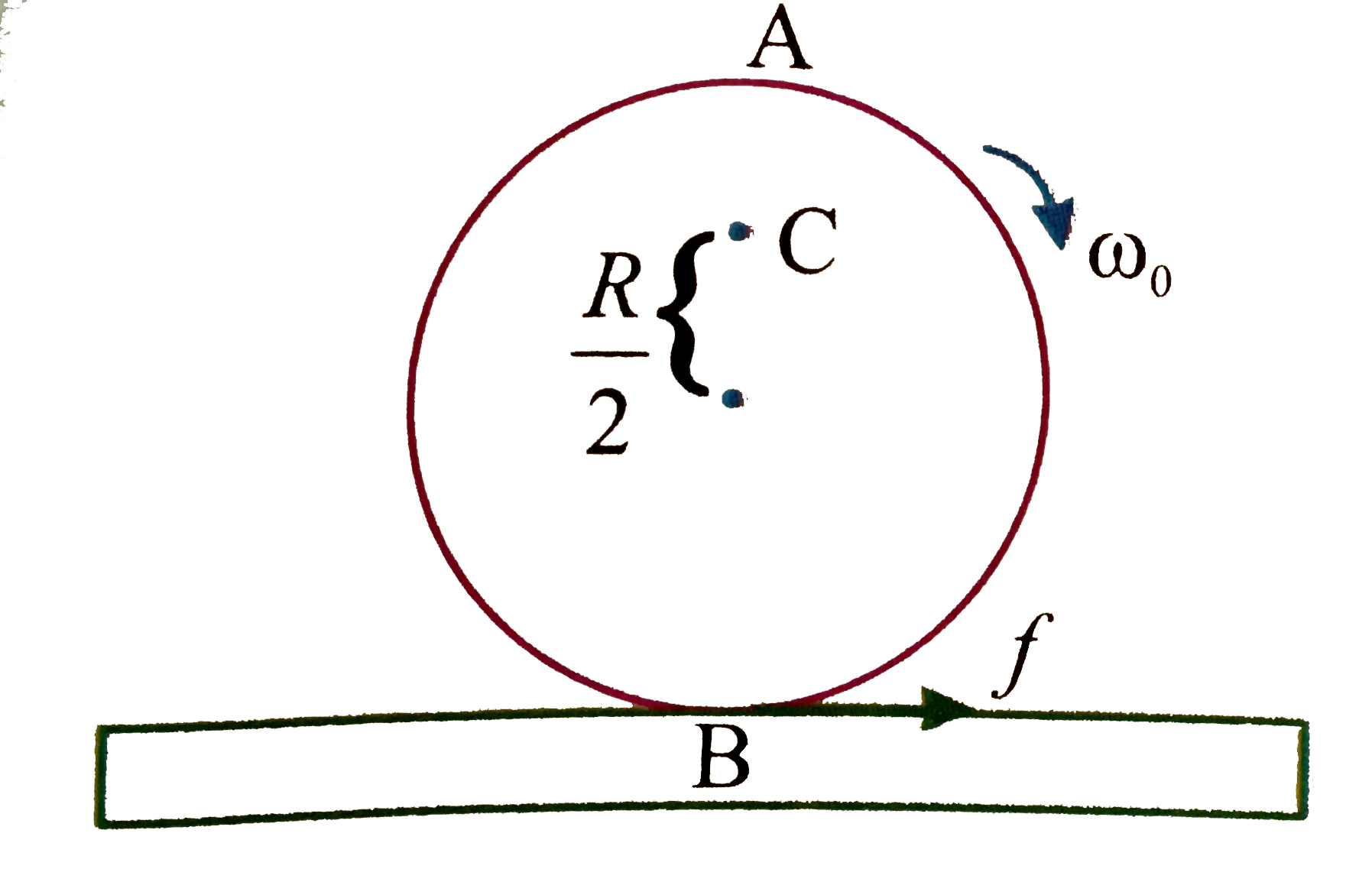
View SolutionConsider a disc rotating in the horizontal plane with a constant angular speed ω about its centre O . The disc has a shaded region on one side of the diameter and an unshaded region on the other side as shown in the figure. When the disc is in the orientation as shown, two pebbles P and Q are simultaneously projected at an angle towards R. The velocity of projection is in the y-z plane and is same for both pebbles with respect to the disc. Assume that (i) they land back on the disc before the disc has completed 18 rotation, (ii) their range is less than half the disc radius, and (iii) w remains constant throughout. Then

View SolutionA disc of mass m and radius R moves in the x−y plane as shown in Fig. The angular momentum of the disc about the origin O at the instant shown is
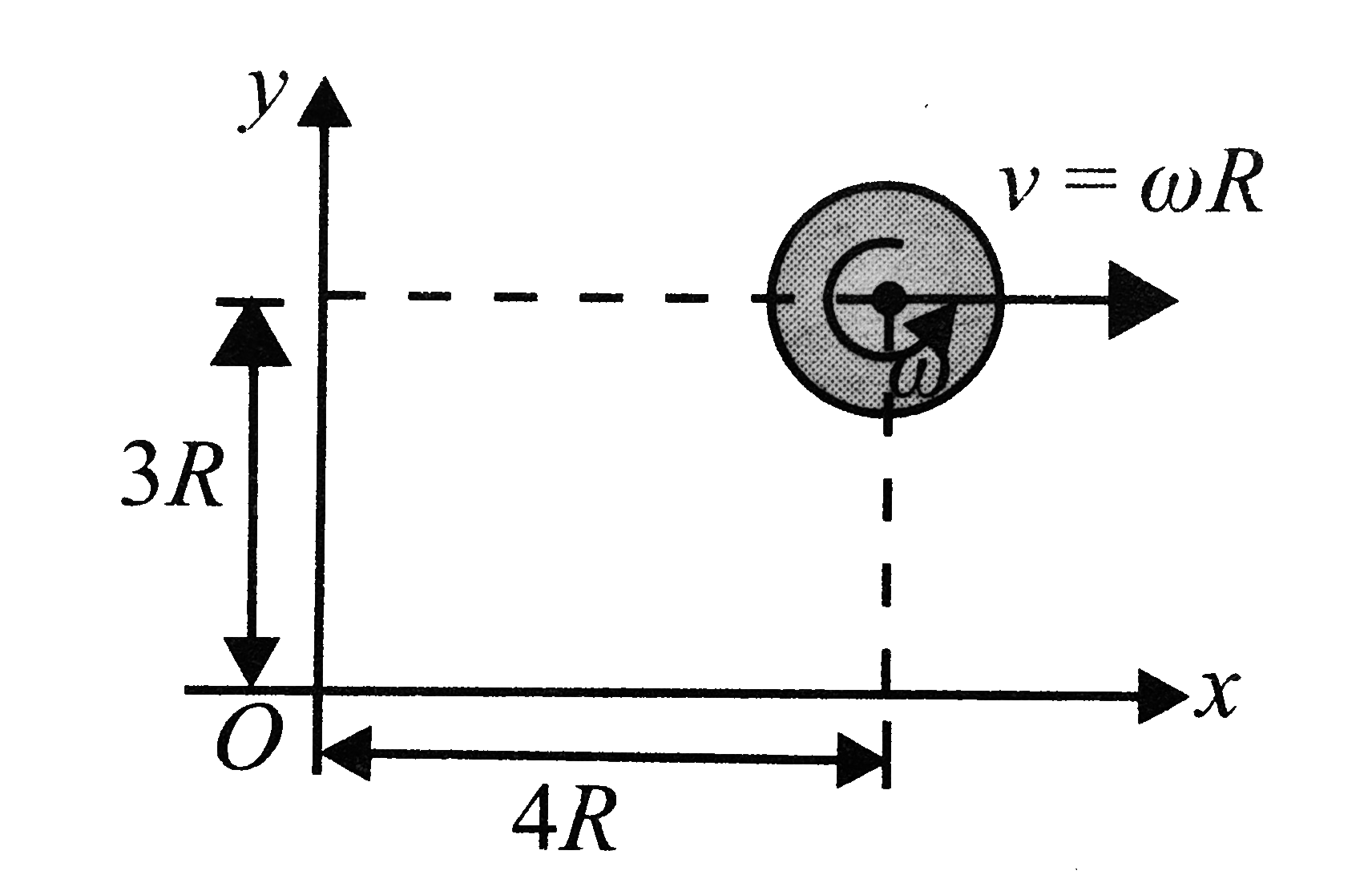
View SolutionTwo identical discs of same radius R are rotating about their axes in opposite directions with the same constant angular speed ω . The discs are in the same horizontal plane. At time t=0 , the points P and Q are facing each other as shown in the figure. The relative speed between the two points P and Q is vr. In one time period (T) of rotation of the discs , vr as a function of time is best represented by
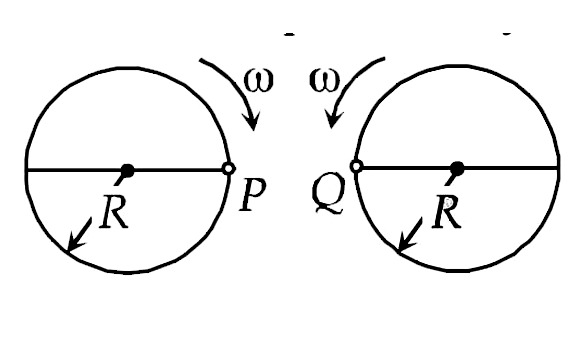
View SolutionA circular disc is rotating in horizontal plane about vertical axis passing through its centre without friction with a person standing on the disc at its edge. If the person gently walks to centre of disc then its angular velocity
View Solution
